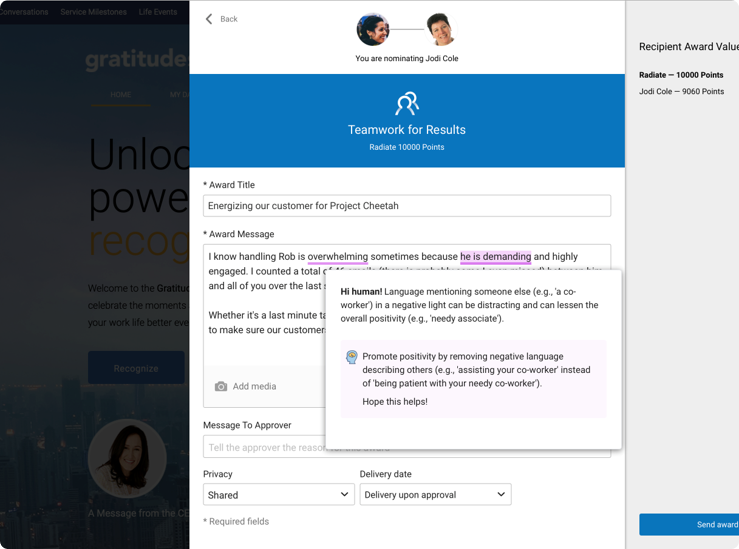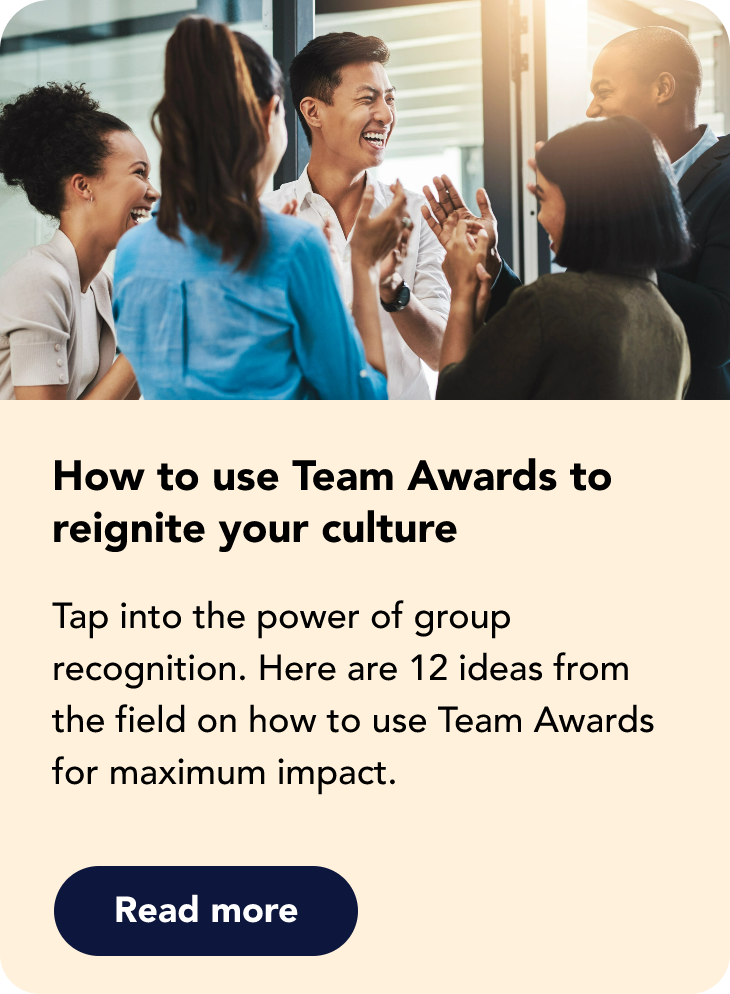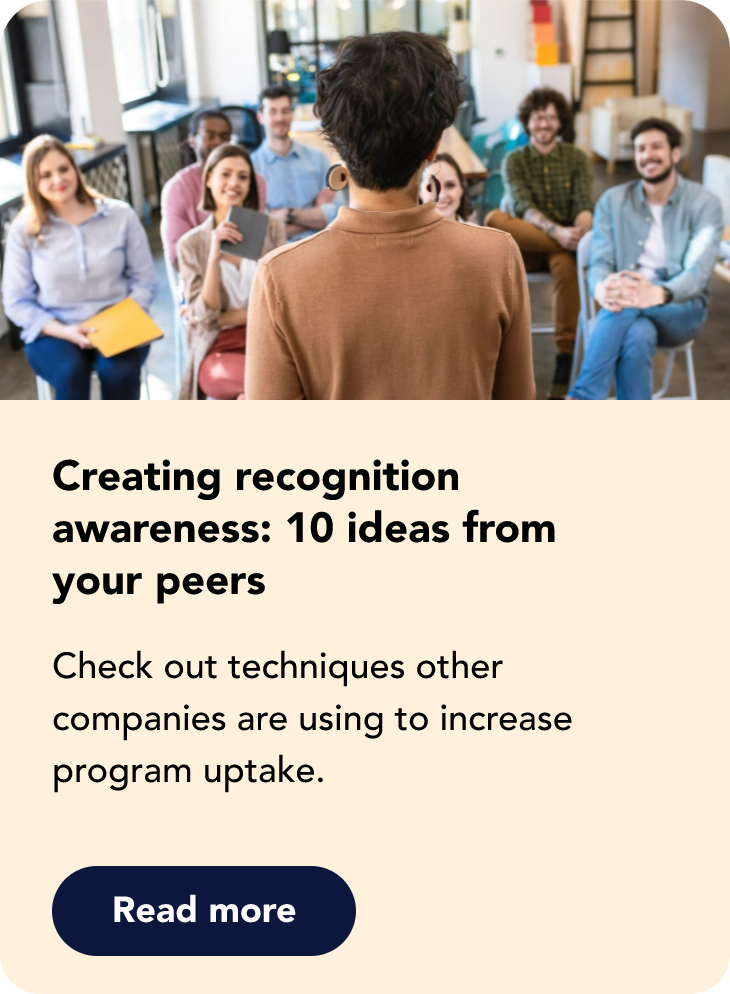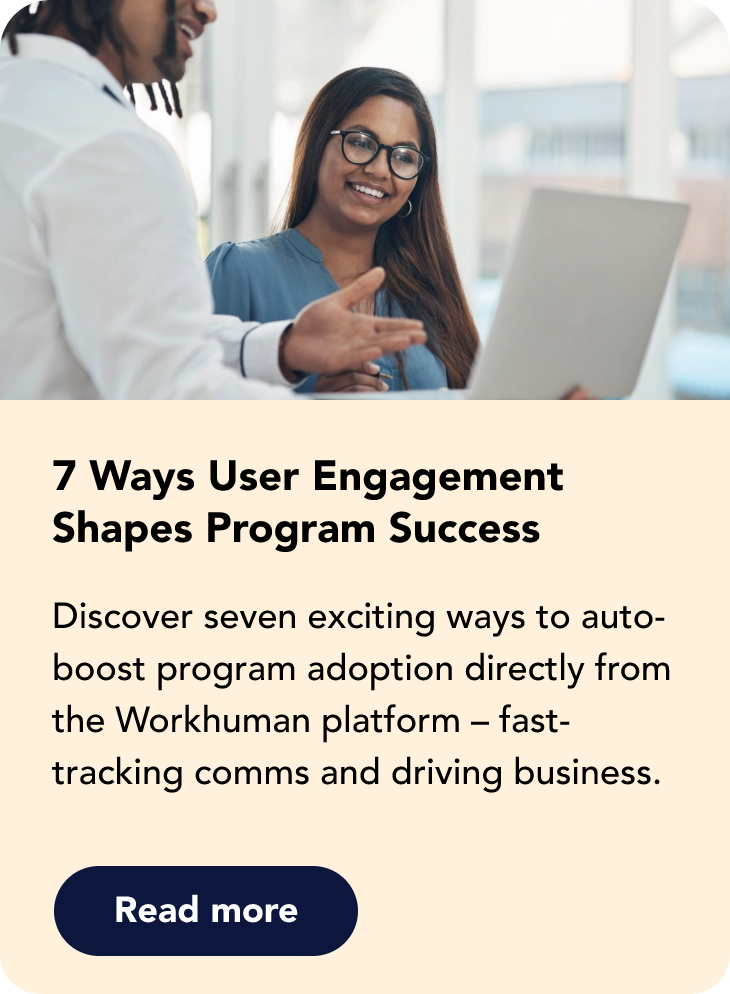Recognition can help increase belonging and decrease unconscious bias in your culture. Here’s how.

Inclusion and belonging are crucial initiatives at most modern organizations – not only for meeting DE&I goals, but also for boosting important metrics around retention, culture, and employee experience.
Most companies immediately understand the power of belonging and feeling valued at work. But they may struggle with how exactly to measure and move the needle on these important goals – and reap the rewards.
As Claudia Brind-Woody from IBM recently put it, “Inclusivity means not just ‘we’re allowed to be here,’ but ‘we are valued.’ I’ve always said: smart teams will do amazing things, but truly diverse teams will do impossible things.”
As we move toward a more human workplace, both employees and leaders are embracing new ways of working, adopting new ways of:
- Thinking: “I have greater opportunities to be an integral part of an industry-leading, diverse and inclusive culture.”
- Feeling: “I am empowered to bring my authentic self to work, create connections, belong, and do my life’s best work.”
- Doing: “I hold myself and others accountable for driving and delivering the next-generation experience.”
Building inclusion can feel like an uphill battle when so much of the organization is still struggling to understand it. In fact, 64% of employees reported experiencing bias in the workplace in the last year. Of those, 83% characterized the bias as a microaggression.
According to Harvard Business Review, a microaggression can be understood as “verbal, behavioral, and environmental indignities that communicate hostile, derogatory, or negative racial slights and insults to the target person or group.” Microaggressions often orient around gender, ethnicity, and cultural differences – but they can also be subtle language choices that make employees feel unwelcome, unsupported, or taken for granted.
As a Workhuman® client, you already have important tools in your ecosystem to help support and advance these key DE&I strategies and move your team toward achieving impossible things.
That’s because being recognized and appreciated is a powerful signal to employees that they belong and are valued in your organization. It makes sense that a steady flow of positive messages of appreciation will go a long way toward helping employees feel good about your culture and their place in it.
However, it’s also important to take steps to make sure those recognition moments are not marred by microaggressions or other biases. Workhuman research estimates that implicit bias is in 20%-30% of written communications in the workplace, even creeping into positive settings such as recognition messages.
Here are five ways social recognition can help you to increase feelings of inclusion and reduce the unconscious biases that might be inhibiting your culture of appreciation.
- Connects us as people and communities – Every time one person in your organization recognizes another, it creates or reinforces a connection between two people. It tells that person they are valued and makes them feel more included as a vital member of your community. Frequency of recognition is an important indicator for helping to increase organizationwide feelings of belonging. Be sure everyone in your organization is receiving an equitable piece of that pie – proportionate to their efforts.
- Aligns employees around shared values – Your recognition program is already built around your company’s core values, showing employees precisely what it means to live your ideals. Tie your values even more directly to DE&I by adding a new award reason around inclusion and belonging – incorporating inclusion into the everyday life of your organization.
- Helps us identify problems – Recognition data can also be a unique and revealing lens to identify problems and understand belonging within your organization. Did you know our Workhuman iQ® team can do a custom analysis of your recognition data against your company demographics? Using gender, age, ethnicity, or any other information you are able to track and share, we can show you any patterns of recognition or highlight groups who have not been recognized equitably. We can also show you how recognition relates to outcomes and help you understand your recognition data in an intersectional way.
- Actively detect unconscious bias – Unintentional or unconscious bias can inhibit inclusion and belonging efforts. Even with the best of intent, words can occasionally backfire. To anticipate and prevent potential problems, add Inclusion Reflection Guides to your Workhuman recognition platform. These guides appear during the nomination process, prompting employees to ensure they’ve included everyone who should be recognized – at appropriate and equitable award levels. Workhuman’s Inclusion Advisor uses natural language processing and machine learning to analyze language as award nominations are written. This tool helps your employees identify and replace phrasing that could be seen as biased, explaining why a phrase might be problematic and suggesting alternatives. See the example below, which suggests rephrasing to remove an implied hesitancy in the award reason.

And remember, the rest of your Workhuman platform also actively supports diversity and inclusion in your organization, including:
| Service Milestones – A way to reflect on someone’s overall contribution – not just for the work they do, but for who they are and what they have added to your culture over time. Invites peers to help celebrate our personal achievements and helps people to feel they belong. | |
| Community Celebrations – Drives culture forward by recognizing groups and communities within the organization and appreciating their positive impact on your organization or the broader community. | |
| Life Events – Invites employees to bring their whole selves to work, celebrating personal milestones with the organization. Reminds workers that their peers accept them and value them not simply as colleagues and workers, but as whole humans. |
Wondering how to take action to incorporate these capabilities into your DE&I strategy? Here are a few simple steps to get you started:
- Actively promote your recognition program and encourage a continuous flow of inclusion to all parts of your organization.
- Consider adding a new award reason around inclusion and belonging.
- Partner with Workhuman iQ to conduct a custom DE&I analysis of your recognition data.
- Turn on Inclusion Reflection Guides for your recognition program to help ensure the right people are being recognized at the right levels.
- Reach out to your DE&I team to share the upcoming release of the Inclusion Advisor with proactive guidance for avoiding unconscious bias in award nominations.


